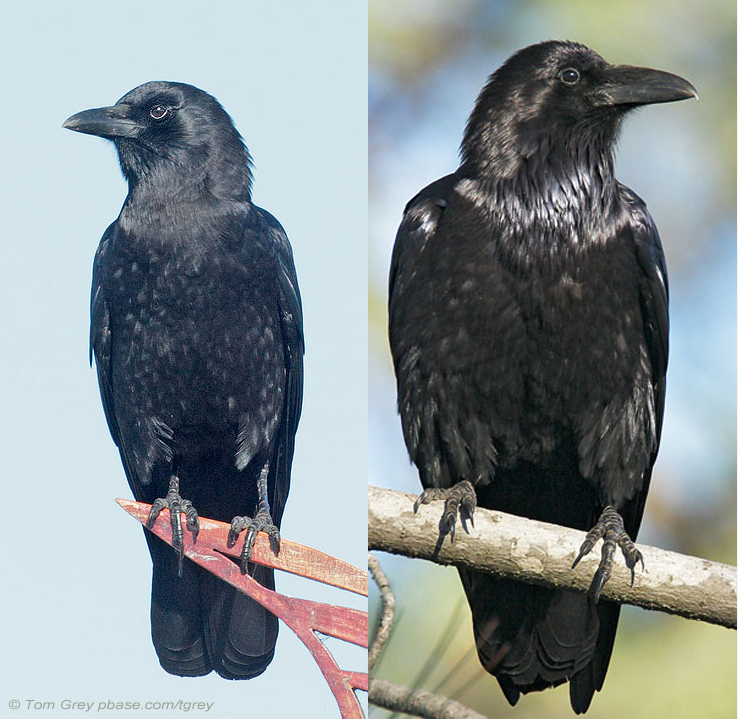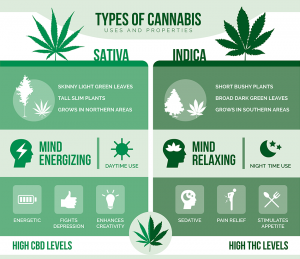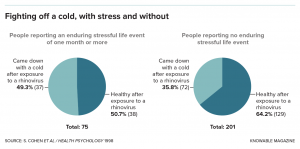Interspecific Aggression
Interspecific aggression is common in animals (Peiman and Robinson 2010) and well documented between species that are ecologically similar. There are generally five reasons why heterospecific aggression occurs. The first reason may be a nonadaptive behaviour, where heterospecifics are mistakenly treated as if they belong to the same species. The rest assume that behaviour is adaptive and all differ in with benefits received is food, space, a mate or a predator-free space.
Though competition for food resources and space is most commonly seen, interspecific aggression could be related to reproductive interactions and predation. Interspecific aggression toward a predator is called “mobbing”, which occurs when a group of individuals attack or harass a predator (Altmann 1956).
crows vs ravens
Since crows and ravens belong in the same family (Corvidae), the difference between them is hard to distinguish at first, but both inhabit distinct features.

A crow (left) and a raven (right) by Tom Grey.
The difference between the American Crow (Corvus brachyrhynchos) and the Common Raven (C. corax) are listed below:
American Crow (C. brachryhynchos)
- Straight beak
- Generally smaller
- Short rhythmic “caw”s
- Consistent flapping
- Fan-shaped tails
- Extremely social (large flocks)
Common Raven (C. corax)
- Slight-point on beak
- Bigger
- Deeper raspy “croak”
- Soaring
- Wedge-shaped tails
- Not social (usually found as pairs or single birds)
Tune in on an episode of Animals and their Experts where the conflict between crows and ravens is explained.
Audio credit: https://soundcloud.com/chelseychow/animals-and-their-experts-crows-and-ravens-podcast
research
Dr. Benjamin G. Freeman, a postdoctoral fellow at the Biodiversity Research Centre in the University of British Columbia, and his friend Dr. Eliot T. Miller worked together to gather and analyze cases of interspecific aggression between crows (American Crow [C. brachyrhynchos] and Northwestern Crow [C. caurinus]) and ravens (Common Raven [C. corax]) in North America.
Dr. Freeman and Dr. Miller observed the general and infrequent reasons as to why interspecific aggression occurs. Crows and ravens are highly intelligent species that exhibit different behaviours, it is unlikely that they misidentify their own species. Researchers found that ravens are dominant over crows at food resources and both defend year-round territories. Since crows shared a common ancestor ~7 million years ago, they are completely reproductively isolated, thus crossing off reproductive interactions. Ravens have been observed to ravage crow nests and deposit eggs into different nests.
In this video, Steve Irwin (acted by Kevin Fabian), voice narrator Lawrence Liang, and Dr. Benjamin Freeman highlight the intelligence of crows and ravens, as well as explain the impact of crows and ravens on humans.

Video credit: https://www.youtube.com/watch?v=gfpb7qAmD3Y&t=4s
Three videos used in the making of the video above:
FINDINGS
As a result, the data in the study done by Dr. Freeman and Dr. Miller is consistent with the hypotheses of interspecific aggression, in particular, the adaptive behaviours that include competition for food and space. However, nest predation is considered to be most likely since crow aggression peaked during the breeding season and before feeding nestlings in March.
Usually, in nature, bigger is better. The larger a creature is the more difficult it becomes to overpower it. Though, this study exhibits that though crows are smaller, they are able to drive ravens off in a big group. Specifically, crows attacked ravens in 97% of aggressive interactions.
By: Chelsey Chow, Kevin Fabian, Lawrence Liang, and Muxi Yang (Group 6)






